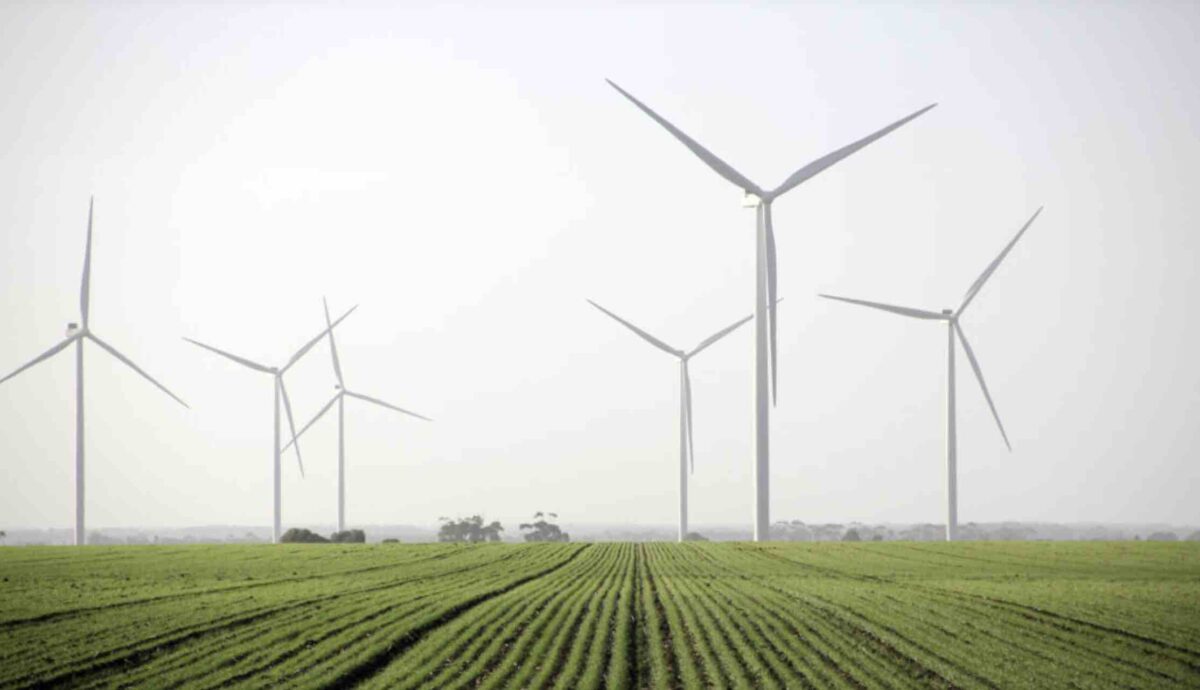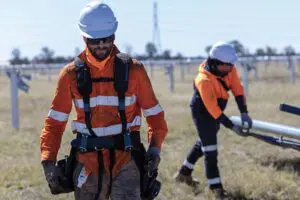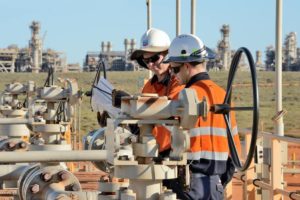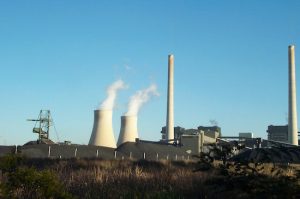Solar and wind projects proposed for construction in Victoria could see planning decisions returned within just four months, with the introduction of a fast-tracked development process the state Labor government hopes will unblock tens of billions of dollars of investment in renewables.
Victorian premier Jacinta Allan said on Thursday the change to the rules means all new renewable projects in Victoria will be treated as “significant economic development,” making them eligible for an accelerated pathway, and removing the planning panel process and third-party appeals.
Allan says the Development Facilitation Program (DFP), which will be apply both to new projects and those currently stuck in the approvals process, means that from the time a complete application is lodged for a state significant project, decisions can be made within four months.
“Through the accelerated pathway, a dedicated facilitation team will oversee all renewable energy applications. Projects will also be monitored on an ongoing basis to identify blockers earlier and resolve them faster,” a statement from the premier says.
It also ensures objections that have been resolved or dealt with don’t get stuck in the Victorian Civil and Administrative Tribunal (VCAT) during the final “notice of decision’ stage, which can add two years to a project’s timeline.
Allan – who visited a wind farm in Mount Wallace on Thursday where she addressed reporters – says more than one in five applications have ended up in VCAT since 2015.
“It’s taking too long,” she said. “We want to spend more time on projects being built, and less time on it being caught up in red tape.”
Earlier, in a statement, she said the current system means that important projects can be tied up for years seeking approval, noting that there is currently around $90 billion worth of investment value in renewable projects in the pipeline.
“It delays construction and deters investment, and instead of spinning turbines, we’re too often left spinning our wheels,” the premier said.
The changes come as this week’s Clean Energy Australia 2024 report confirms the slowdown in new financial commitments to utility-scale generation capacity in Australia, with just $1.5 billion locked in for new projects in 2023, significantly down on $6.5 billion for 2022.
The report shows that of the 22 large-scale solar and wind projects completed in 2023, only four were in Victoria – two solar farms and two wind farms. The state, which is targeting a 65 per cent renewables share of the grid by 2030 and 95 per cent by 2035, is currently sitting at just under 40 per cent.
Aside from the slowdown in investment, one of the biggest hurdles facing the accelerated shift to renewables for Australia’s states and territories is social licence, as some regional communities start to push back against the apparent tide of projects being proposed in their “back yards.”
In New South Wales, where the backlog of development approvals is arguably the worst in the country, it has been argued that the sheer number of projects vying for space on the grid is eroding social licence, with communities not aware that only a handful of “the best” projects will end up being built.
In an address to the Smart Energy Conference in Sydney last week, Amy Kean, a director at Stride Renewables, said part of the need to move more quickly through the approvals process is so that “distressed communities” can be spared from concern over theoretical impacts of projects that will not go ahead.
“Just to show the social licence issue we have right now, Stride’s analysis shows the proportion of proponents objecting to renewable energy projects was greater than mining, coal and extractive industries,” Kean said. “We have a problem.”
In Victoria, the biggest roadblock to new renewables development has been the lack of network capacity, but the already delayed push for new transmission projects has met fierce resistance from some local communities, and even energy analysts are divided over the benefits of some of the proposed projects.
To remedy this, the state took over transmission planning from the Australian Energy Market Operator midway through last year, handing the task to VicGrid, which was already responsible for the development of renewable energy zones in the state state.
In announcing this week’s latest change to the state’s renewables development process, Allan said the voices of communities who wanted to raise concerns with a proposal would continue to be protected.
“Third party objections will still have a place in the approvals process, but this change prevents time-consuming and repeated delays that hold these projects back for years,” the premier said.
For developers, the Clean Energy Council says the latest Victorian reform will remove some of the uncertainty on planning process timeframes and outcomes – a major cause of delays.
“No new wind farms were approved for development in Victoria during 2023, demonstrating the need for a review of planning and assessment processes to achieve greater clarity and certainty for developers,” said CEC director of energy generation and storage, Nicholas Aberle, on Thursday.
“In particular, last year’s decision on the Willatook Wind Farm exacerbated confusion about how wind farm proposals would be assessed, creating a chilling effect on the investment environment in Victoria.
“Ensuring consistent, predictable and timely decisions on renewable energy developments is critical to climate action in Victoria and a timely transition of our electricity system, which is now powered by almost 40 per cent renewable energy nationally.”
But the CEC has flagged one area of the new Development Facilitation Program that remains unclear.
“Our understanding is that … projects that require an EES [environmental effects statement) are ineligible for the DFP pathway, which would cover many wind projects,”Aberle said.
“This should be reviewed to ensure today’s announcement delivers on the acceleration it intends to provide.”
AGL Energy said on Thursday that it welcomed the improvements being made in Victoria to enable a faster approvals process for renewable energy projects.
“AGL is progressing our development pipeline to meet our ambition to deliver 12GW of renewable generation and storage by 2035,” a spokesperson told Renew Economy.
“Achieving our national goals as a country in the renewable energy transition to reduce emissions requires a coordinated effort, with governments, industry, communities and Traditional Owner groups working together, including to enable efficient and timely approvals for renewable energy developments.”










